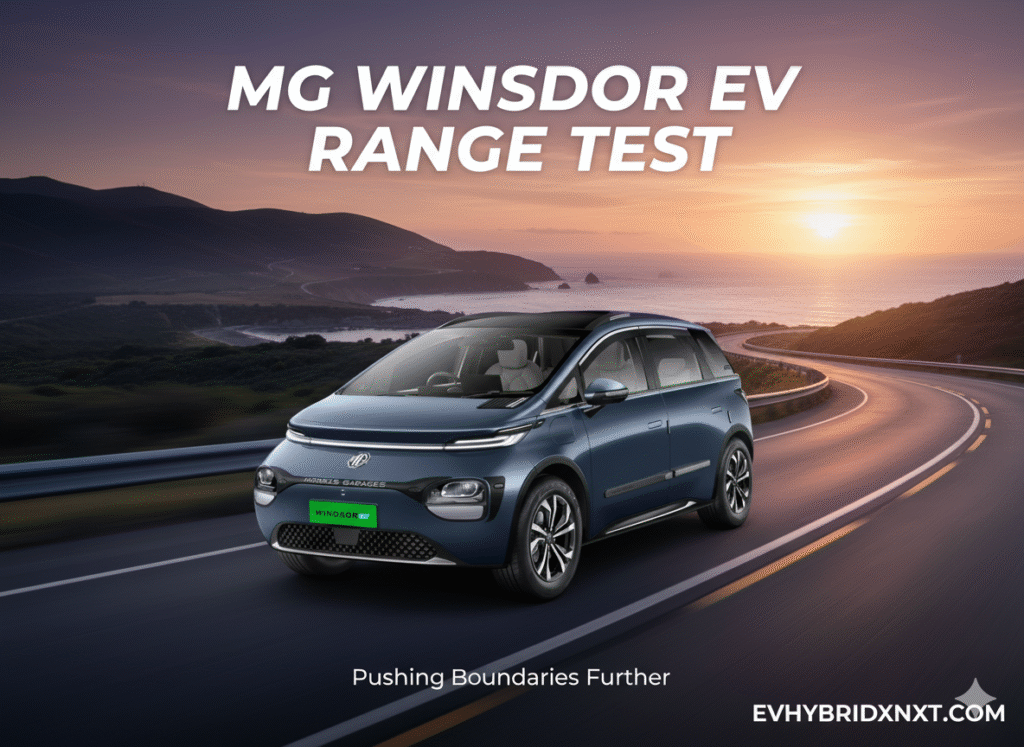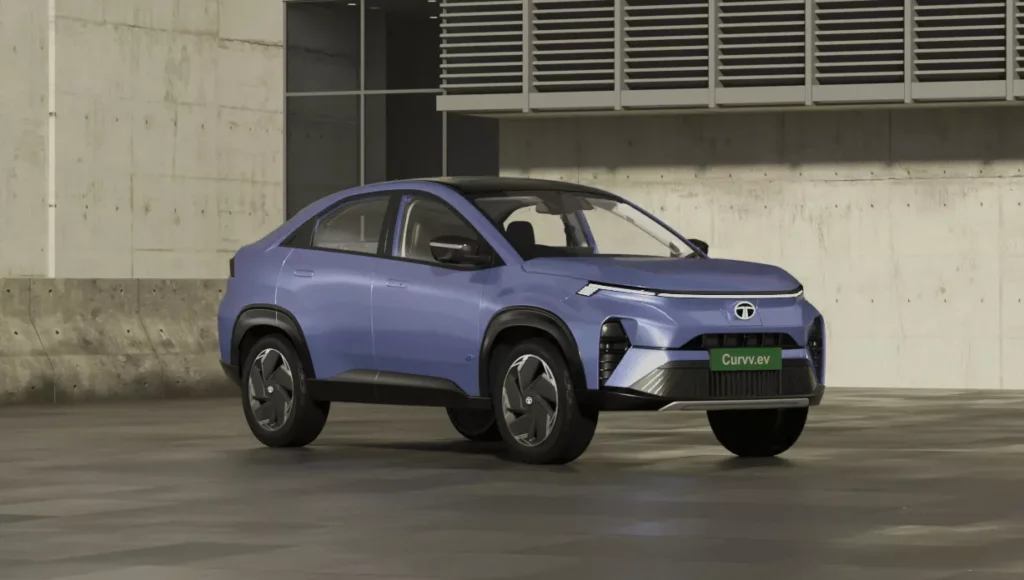The MG Windsor EV, powered by a 38 kWh battery, is making waves in the Indian electric vehicle market. With a claimed range of 331 km, I decided to put this car through an extreme range test to see how it performs under demanding conditions. Unlike typical city or traffic-based tests, this one was all about pushing the car to its limits on the expressway, maintaining high speeds, and testing its real-world range. Here’s a detailed account of the test, the results, and whether the MG Windsor EV is worth your ₹20 lakh budget.
For this test, I took the MG Windsor EV (non-Pro pack, 38 kWh battery) on an expressway, ensuring no city driving or traffic interruptions. The goal was to drive at high speeds—mostly between 80-120 km/h, with a focus on keeping it above 110 km/h whenever possible. The car was driven in Normal mode, avoiding Eco or Sports modes to reflect real-world usage for most buyers. I reset the trip meter at the start, and the car displayed an initial range of 317 km with a full charge.
To monitor energy consumption, I used a meter to track the charging process and a Zeev Point 7.5 kW AC fast charger with Wi-Fi connectivity for precise data logging. The plan was simple: drive hard, test the range, and then calculate the cost of charging to evaluate the car’s efficiency.
The Test: High-Speed Range Endurance
The test began on a clear expressway with no traffic interruptions. Here’s how the MG Windsor EV performed:
- 16.6 km: After driving 16.6 km, the car’s range dropped to 299 km, indicating an initial consumption aligned with the displayed 317 km range. At this point, I was maintaining speeds between 80-100 km/h.
- 42 km: With the speed consistently at 100 km/h, the range dropped to 268 km, and the battery was at 84%. The open road allowed me to push further, so I set the cruise control to 110 km/h.
- 85 km: After covering 85 km at 110 km/h, the range was down to 204 km, with the battery at 64%. The range was now hovering around 290 km, slightly below the initial 317 km, reflecting the aggressive driving style.
- 114 km: With a driver change to account for slight variations in driving style, the car had covered 114 km, with 166 km of range remaining (battery at 50%). The range estimate had dipped below 290 km, showing the impact of sustained high-speed driving.
- 210 km: After pushing the car for 210 km at speeds between 110-120 km/h, the battery was down to 8%, with just 24 km of range left. The car was still performing strongly, with no crawl mode kicking in, unlike some competitors like Tata EVs, which limit performance below 10% battery.
- 219 km: At 4% battery, the car was still capable of hitting 100 km/h, showing no signs of performance throttling. The range display showed 12 km remaining, and the car had covered 219 km on the expressway without slowing down.
- Final Range: The car delivered a total range of 235 km under extreme conditions—driven at 110-120 km/h on the expressway with no traffic or city driving. This is well below the claimed 331 km but impressive given the aggressive driving style.
After depleting the battery to 0%, I charged the MG Windsor EV from 0-100% using the Zeev Point 7.5 kW AC fast charger. Here’s what I found:
- Charging Time: Using a standard charger, the car takes 16-17 hours to fully charge from 0-100%. However, with the 7.5 kW fast charger, this time is significantly reduced.
- Energy Consumption: The car consumed 40 units (kWh) of electricity to charge from 0-100%, slightly more than its rated 38 kWh capacity due to charging inefficiencies.
- Cost: At an assumed rate of ₹7 per unit, the total cost to charge the car was ₹280. For 235 km of range, this translates to a running cost of approximately ₹1.19 per km.
This makes the MG Windsor EV incredibly cost-efficient, especially compared to petrol or diesel vehicles. For reference, a diesel car with 15 km/l mileage and fuel at ₹90/liter costs around ₹6 per km—five times more expensive.
Real-World Insights and Observations
- Performance at Low Battery: Unlike some EVs that enter a restrictive crawl mode below 10% battery, the MG Windsor EV maintained its performance even at 4% charge, capable of hitting 100 km/h. This is a significant advantage for those who push their EVs to the limit.
- Range Expectations: The claimed 331 km range is achievable in ideal conditions (city driving, Eco mode, light throttle). However, under extreme conditions (110-120 km/h on the expressway), the real-world range is around 230-235 km. In a previous trip to Manali with five passengers, the car delivered 260-270 km, suggesting that gentler driving can yield closer to 300 km.
- Driving Experience: The car handles well at high speeds, with no noticeable loss in performance. However, the reliance on the touchscreen for functions like folding ORVMs or turning on headlights feels cumbersome. Physical buttons or knobs would have been more user-friendly.
- Charging Convenience: The Zeev Point 7.5 kW fast charger, with its Wi-Fi-enabled app, made monitoring charging stats a breeze. It tracks power draw (3.4-7.5 kW), voltage, current, and total units consumed, with historical data for reference. This is a game-changer for EV owners who need fast and reliable charging.
Is the MG Windsor EV Worth It?If you’re in the market with a ₹20 lakh budget, the MG Windsor EV is a compelling option. Here’s why:
- Pros:
- Exceptional cost-efficiency at ₹1.19/km under extreme conditions.
- Strong performance even at low battery levels, with no crawl mode.
- Decent range (230-235 km at 110-120 km/h; up to 300 km with gentler driving).
- Comfortable for long drives, as proven on a Manali trip with five passengers.
- Fast charging compatibility with the right infrastructure (e.g., Zeev Point 7.5 kW charger).
- Cons:
- Overreliance on the touchscreen for basic functions is inconvenient.
- The 38 kWh battery may feel limiting for those seeking longer ranges without fast charging.
- High-speed driving significantly reduces range compared to the claimed 331 km.
The MG Windsor EV is a solid choice for buyers looking for an affordable, feature-packed electric SUV under ₹20 lakh. While its range drops to 230-235 km under extreme high-speed conditions, it’s still competitive for an EV in this segment. With gentle driving, you can expect close to 300 km, making it versatile for both city and highway use. The low running cost of ₹1.19/km and the absence of a restrictive crawl mode make it a practical and fun-to-drive EV.
For those considering alternatives, compare it with other EVs like the Tata Nexon EV or Hyundai Kona Electric, but the MG Windsor EV’s balance of cost, performance, and range makes it a strong contender. If you’re ready to invest in a fast charger like the Zeev Point 7.5 kW, the ownership experience becomes even more seamless.



